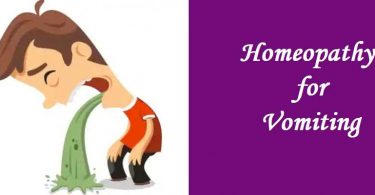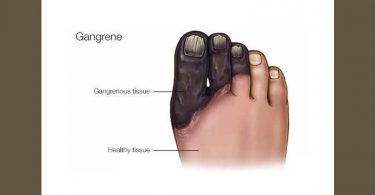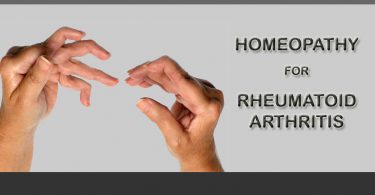What is bipolar disorder?

People who have bipolar disorder experience extreme changes in mood, energy, and behavior. They alternate, or switch, between two opposite emotions. Their mood repeatedly alternates from extremely happy, or high, to sad and hopeless. In between the extremes, their mood might be calm. People with bipolar disorder cannot control their mood changes.
Who gets bipolar disorder?
The illness affects males and females in equal numbers. It can develop in any age. In fact, more and more children are being diagnosed, or identified, with the disease. Usually , however, symptoms, or signs, first appear in the late teens or early twenties. The illness may take several years to develop fully. Often people don’t realize they have bipolar disorder because they don’t think of the highs as part of the illness. If untreated, bipolar disorder grows worse as the person gets older.
Also Read: A Homeopathic Approach to Bipolar Disorder in Teens
Cause of bipolar disorder
No one knows the exact cause of bipolar disorder. Brain chemistry, genetics, and environment all seem to have a part.
Two methods have been used to look at the brain of the people with bipolar disorder. They are called magnetic resonance imaging (MRI) and positron emission tomography (PET). These methods produce photographic pictures, or scans, of the brain. They show parts of the brain that may not function properly during an episode of mania or depression.
Scientists think that a lack of neurotransmitters may cause the brain malfunction. These chemicals help brain cells communicate with each other. Irregular production of hormones, the chemical that regulate growth and development, also may play role. Another possibility is a buildup of calcium in brain cells. This mineral is important in the development and repair of bones and teeth.
An episode of mania or depression may occur for no apparent reason. Other times, something stressful in a person’s environment may trigger an episode. It might be a divorce or death of a loved one. It might be something that seems unimportant, like missing the bus. People with bipolar disorder often are unable to withstand even a small amount of stress. However, bipolar disorder is not a weakness in a person’s character. It is a treatable illness.
Certain medical conditions can bring about manic or depressive episodes. These include a stroke, a brain tumor, or a seizure disorder. A seizure is a sudden, abnormal activity in the brain. Street drugs and prescription medicines also may trigger symptoms of mania and depression.
Diagnosis of bipolar disorder
The diagnosis of bipolar disorders continues to rely on clinical information. Thus, as in general psychiatric practice, a comprehensive biopsychosocial assessment is crucial for effective management.
Diagnosis can be based on following principles
Chief complaints – individuals with bipolar disorder commonly present as outpatients, complaining of (often treatment-resistant) depressive symptoms, making the distinction of bipolar from unipoler major depressive disorder crucial. The prominent depressive symptoms of mixed episodes also make distinction of such episodes from agitated unipoler major depression crucial. Presentation of mood elevation can vary in severity from mildly to moderately irritable hypomania in outpatients, and thus risk being undetected, to severe psychotic, manic or mixed episodes in inpatients, and thus risk being diagnosed as a psychotic disorder.
History of current illness – careful characterization of the current clinical status of a syndromal manic, hypo manic, mixed, or major depressive episode compared with subsyndromal symptoms or euthymia is necessary to provide illness phase- appropriate treatment. Attention must be paid to the presence and absence of symptoms of not only mood elevation and depression but also co morbid psychiatric and medical disorder. Biological, psychological, and social stressors; relation to symptoms; and variations therefore over time require careful assessment.
Current somatic and psychological treatment and adherence, as well as therapeutic and adverse effects, need to be assessed because current treatments may be attenuating or exacerbating symptoms, and responses will crucially affect treatment planning.
Psychiatric history – perceptions, prodromes, onset, duration, frequency, and symptoms of episodes of mood elevation and depression, as well as co morbid psychiatric disorders, need to be characterized. Currently depressed patients may have difficulty recalling and identifying previous episodes of mood elevation; collateral history from a significant other can greatly enhance accuracy. Some patient with chronic illness may have difficulty recalling and identifying discrete episodes.
Medical history – a detailed family psychiatric, substance use , and medical history, with particular emphasis on first degree relatives and including individuals with ( suspected or actual) diagnosis and treatment(including hospitalization) of psychosis, suicide, suicide attempts, self-harm, or harm to others, is indicated. Therapeutic and adverse effects of psychiatric treatments in first-degree relatives may affect treatment planning.
Social history – the social and developmental history should include assessment and employment status, living situation (including presence of vulnerable individuals in the home), external supports (including family), cultural and religious beliefs, and actual and chronic psychosocial stressors (including interpersonal, financial, and family problems; domestic violence; and sexual or physical abuse or neglect).
Mental status examination – attire may be disheveled or drab during depression and flamboyant or bizarre during mood elevation. Psychomotor retardation and slow, low-volume speech suggest depression, whereas psychomotor agitation and rapid, high-volume speech may indicate hypo manic, manic, or mixed symptoms. Similarly, depressed or anhedonic mood with blunted affect may indicate depression, whereas euphoric, expansive, or irritable mood with labile affect suggests mood elevation. Suicidal thoughts are seen primarily during depressive and mixed episodes.
Treatment of bipolar disorder
Treatment of bipolar disorder mainly includes:
Pharmacotherapy – lithium is the mainstay of treatment for bipolar disorder. in mania a large body of data indicates its superiority to placebo and effects equal to placebo and effects equal to or surpassing those of neuroleptics. Certain factors predict relatively poorer response to lithium, including mixed mania and depression, rapid cycling, and substance abuse.
Controlled studies of the anticonvulsants carbamazepine and valproic acid indicated that these agents also have substantial ant manic effects.
Psychotherapies – data on specific psychotherapies are minimal, and we are therefore unfortunate left to rely on common- sense clinical principles alone.
Homeopathic treatment of bipolar disorder
Homeopathy is one of the most popular holistic systems of medicine. The selection of remedy is based upon the theory of individualization and symptoms similarity by using holistic approach. This is the only way through which a state of complete health can be regained by removing all the sign and symptoms from which the patient is suffering. The aim of homeopathy is not only to treat bipolar disorder but to address its underlying cause and individual susceptibility. As far as therapeutic medication is concerned, several medicines are available for bipolar disorder treatment that can be selected on the basis of cause, condition, sensation and modalities of the complaints. For individualized remedy selection and treatment, the patient should consult a qualified homeopathic doctor in person. Some important remedies are given below for bipolar disorder treatment:
Aurum Met, Gelsemium, Caladium, Crotolus, Ammonium Carb, Agnus Cast, Acid Phos, Digitalis, Zincum and many other medicines.
–
References:
Judith Peacock; Bipolar Disorder (2000); 5-12.
Terence A. Ketter; Handbook of diagnosis and treatment of bipolar disorder; 2010; 1-4
Jerald Kay, Jeffery A. Lieberman, Allan Tasman; Psychiatry: behavioral science and clinical essentials 2000; 339-340.
Bipolar Disorder Cases Cured with Homeopathic Medicine
A Case of Bipolar Disorder – by Julius Fernandes
A Fight Between Stubborn Bipolar Depression and Homeopathy! – by Kavita R. Chandak
The Mueller Method in Practice – Six Cases – by Manfred Mueller






Many other rems.. Refer to Deborah Collins’ work with Lithium salts in homeopathy.. Words of the patient “up & down, up & down..”